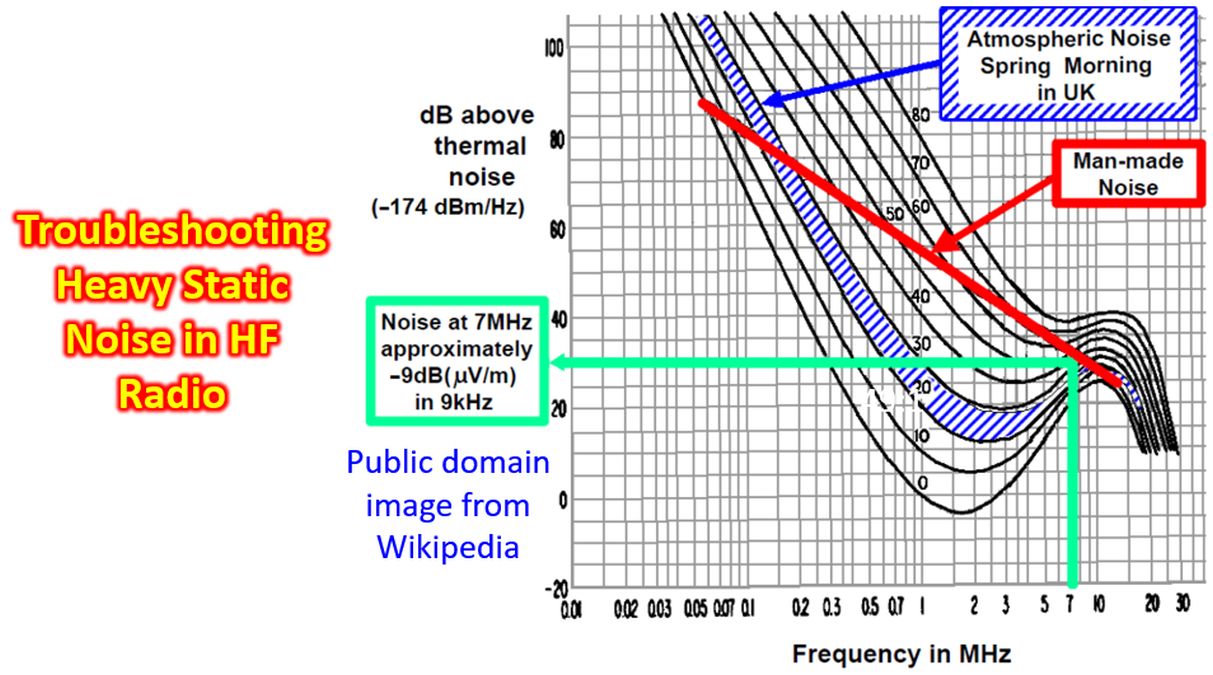Troubleshooting Heavy Static Noise in HF Radio
Troubleshooting Heavy Static Noise in HF Radio
Many of the radio amateurs living in large cities face a lot of noise in their radio receivers. I have quite a lot of noise in my VHF radio in the evening, but not during day time. Noise decreases somewhat after 9 pm in my radio. Noise could be there in rural areas also, but not so much as in cities. Some lucky ones are able to get good reception by grounding the cabinets of radio and power supply as well as the shield of the coaxial cable. Some add snapon ferrite cores over the antenna cables and find that useful. But most others have to do painstaking trouble shooting of the source of interference, which may sometimes be outside your compound as well. This can occur if there are many electronic devices working in your neigbhourhood. In that case all that you can do is to try to keep your antenna as far away from the potential source.

Nearby powerlines could be an important source of noise in the radio. There is a huge list of potential sources of RF interference which can be seen in modern homes. Here are some of them:
- Switch mode power supply which is widely used in mobile phone chargers and uninterruptible power supply. Fortunately my VHF equipment uses a linear, transformer based power supply.
- Computer and television monitors. You can’t avoid a computer monitor in the shack these days, especially if you plan to go for the digital modes.
- Fluorescent tubes which used to be my favourite light source earlier, being phased out now.
- Plenty of LED tubes and bulbs now common place in all homes. Powersupply or the so called driver units of LED lighting, which are switch mode power supplies generate RF.
- Add to this list, the kitchen refrigerator, which is now-a-days a ‘smart refrigerator’ with possible connection to its app by scanning a QR code.
- Almost any other ‘smart device’ like modern air-conditioners, robotic vacuum cleaners, all have their own footprints in the radiofrequency spectrum.
- Inverters used along with solar panels, which are now ubiquitous. This is more likely if the inverters are not made according to RFI specifications.
- WiFi routers and Bluetooth devices also use RF spectrum, but at UHF range and at relatively low output. But their chargers may have RFI in HF spectrum.
Most modern radios have noise blanker and noise reduction settings. Receiver preamplifier, attenuator and automatic gain control settings can sometimes be optimised to reduce noise. For this a thorough review of operating manual of the radio will be useful. For detecting the source of interference, sometimes a small portable AM radio may be useful. Turning it in different directions could identify from which direction the interference is coming. The ferrite rod antenna in these radios get better signals when the broad side of the radio is towards the source. The same principle is applied in Amateur Radio Direction Finding, popularly known as Fox Hunt.
Troubleshooting a source of RFI at home starts by switching off the main power supply as well as the inverter/UPS and running your radio on battery. Step by step switching on of various other devices at home will let you know the source at home. If RFI is there after switching off all devices, naturally it is coming from outside. In that case, beyond antenna relocation, there are QRM ellimination by antenna phasing and noise cancelling devices available, but a good quality one might cost as much as your radio! If an offending source is found at home, snapon ferrite cores on their cables could reduce RFI to some extent. For CW operators, using narrow band CW with a very narrow bandwidth of 100 Hz on receive may be useful. Digital modes like FT8, though can still be interfered by high noise levels, you do not have to ‘hear’ the noise!
Common mode choke current balun at the feed point and at the entry into shack are other options being tried by some to reduce RF interference, especially for end fed half wave antennas in which the feedline acts as part of the antenna system. Changing over to magnetic loop antenna has been noted to be useful by many. A small magnetic loop antenna responds mostly to the magnetic component of the electromagnetic wave and is fairly insensitive to the electrical field component. So they are able to receive weak signals out of the ambient noise. Most of these tips have been provided by Elmers in different online discussion forums and I hope it will be useful to have them in one location!